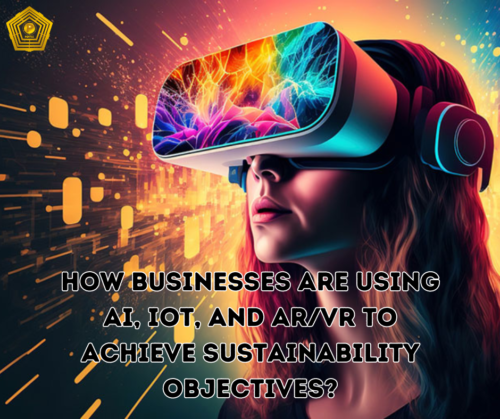Industry 4.0 businesses and medical product manufacturers have expressed interest in a number of technologies that support sustainability objectives and emissions reduction. They include wireless communication, automation, sensor technologies, and the Internet of Things. Thanks to these technical advancements, entire sectors of the medical and health industries as well as manufacturers may now produce, gather, monitor, and analyze the vast volumes of data that form the basis for AI efforts. With the help of these data and technologies, today’s organizations and leaders are successfully advancing their digital transformation while simultaneously advancing their corporate and sustainability objectives.
Machine learning, IoT, and AI are crucial for sustainability
Medical manufacturers are utilizing technologies like AI and AR/VR as a result of this use to improve product designs, optimize production planning and logistics, implement predictive maintenance, enhance quality and process control, develop agile robots, increase energy efficiency, and reduce waste in their operations. Through improved efficiency and cost savings, these technologies have shown to support an organization’s digital transformation plans.
A combination of powerful sensing apparatus and computer vision enables AI to receive and analyse a wide range of data. The large volume of data can be analyzed swiftly in comparison to the amount of time needed for human analysis. By augmenting the data with machine learning (ML) and natural language processing (NLP), a better result is generated. As a result, artificial intelligence is becoming more important in sustainable production.
How crucial AR and VR are
In turn, AR/VR is giving the mission of sustainable business practices even more strength. Let’s start by defining the distinction between AR and VR.
The term “augmented reality” (AR) refers to a technology that adds virtual aspects to the real environment and is used by pharmaceutical companies or corporate businesses. For instance, these virtual components could take the shape of text, pictures, 3D models, or animations. AR has several applications, including marketing, design/engineering, learning, navigation, and training.
Contrarily, virtual reality (VR) is a technology that generates a virtual world that business users may access with the aid of VR glasses. The user can interact, handle items, and even make physical movements in a VR environment. Users can now engage with the virtual environment thanks to this. VR can be utilized for a variety of tasks, including design, training, simulations, and customer site visits.
Medical manufacturers who use AR/VR quickly recognize how they are reducing waste during the early stages of product design and redesign, promoting and teaching recycling practices, supporting brand transparency, and meeting consumer demand for sustainable practices.
Manufacturers who use AR/VR training instead of real-world training, for instance, reduce emissions caused by waste generated during the production of plastics. Additionally, virtualized customer site visits cut the emissions caused by the transportation of real-world meetings.
Demand for sustainable methods of producing, distributing, and selling goods from brands is rising. Consumers express their opinions by choosing certain products. They favor environmentally conscious, sustainable brands over less environmentally friendly ones, even if they are more expensive.
Virtualized technologies also offer a variety of sustainable alternatives. One such solution is live AR events, which do away with the need for unnecessary travel, needless printing, and other waste associated with actual live events.
The ability to perfectly overlay a model or digital duplicate of an object on another is essential for AR and VR applications. This aids in supplying work instructions for assembly and training, as well as identifying any manufacturing faults or flaws. As the job develops, the user can keep track of the object(s) and modify the representation, establishing the sustainable business practice.
The majority of on-device object tracking solutions use marker- or 2D image-based tracking. This indicates that even though consumers may appear to have a good match when viewing from a certain angle or position, the overlay loses alignment when the user moves around in 6DOF.
This works effectively for symmetrical items, such as hands, faces, cups, tables, chairs, wheels, and regular geometrical structures, as well as smaller, simpler objects. However, labeled training data (particularly so in 3D) is not easily accessible for huge, complicated objects in enterprise use cases. This makes using the 2D image-based tracking to align, overlay, and persistently track the item and merge the rendered model with it in 3D challenging, if not impossible. Users may ensure a suitable outcome and that their virtualized process has resulted in a more sustainable business practice by leveraging AR/VR in 3D and in conjunction with AI.
By utilizing these technologies, medical manufacturers and enterprises may be confident that their future investments in AI, mixed reality technologies, and IoT, among other things, will bring them closer to their corporate sustainability goals.

















